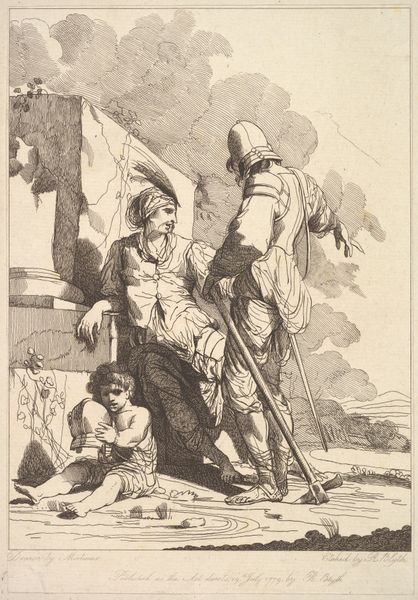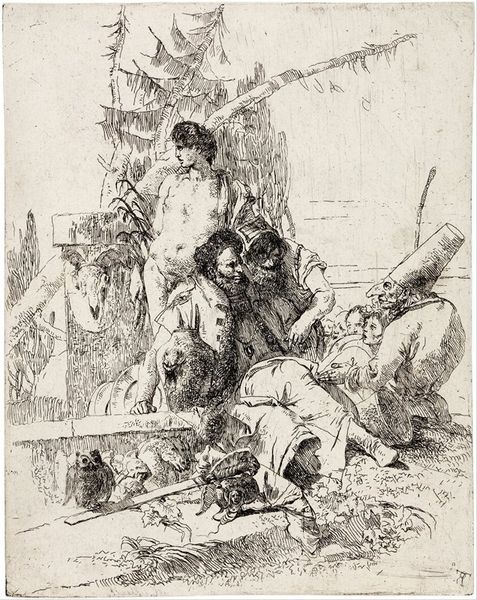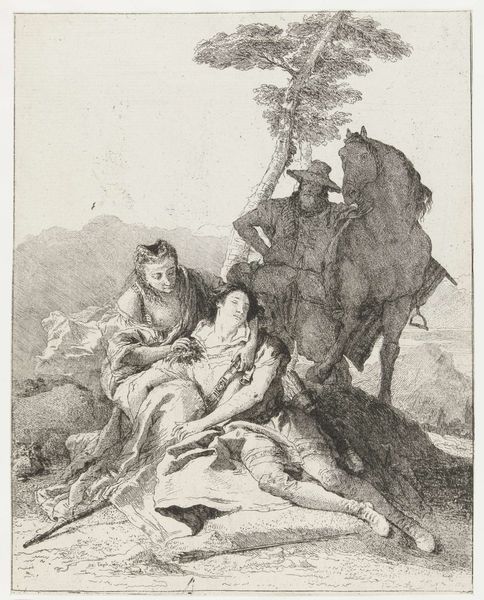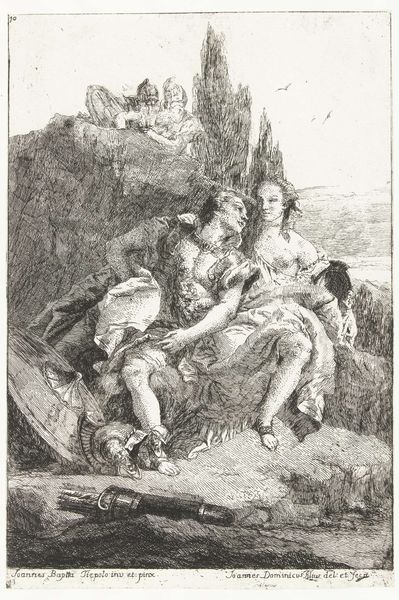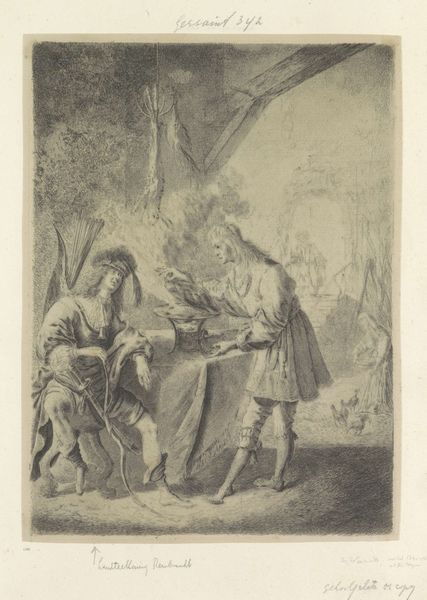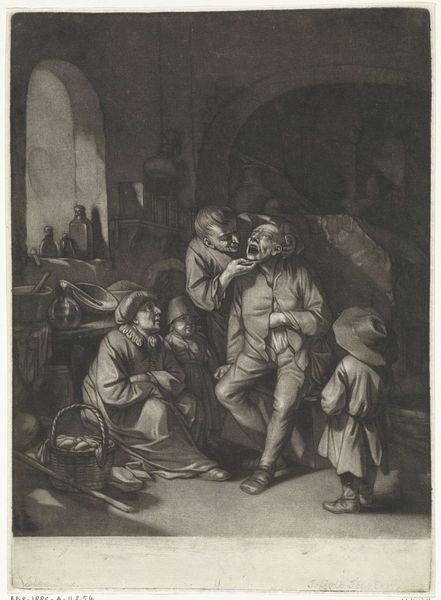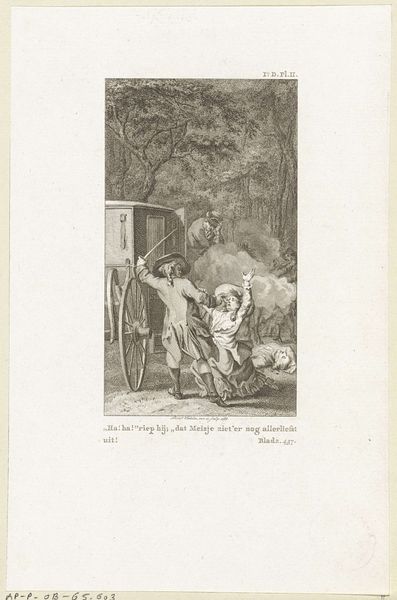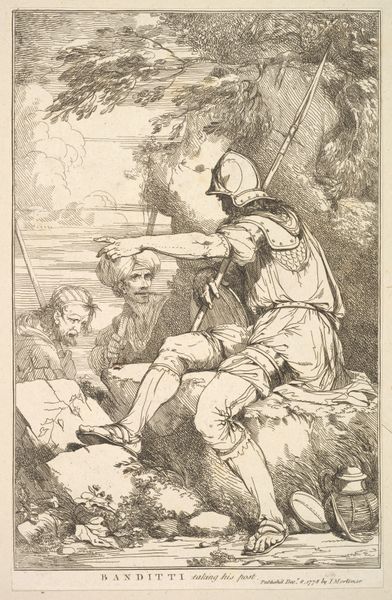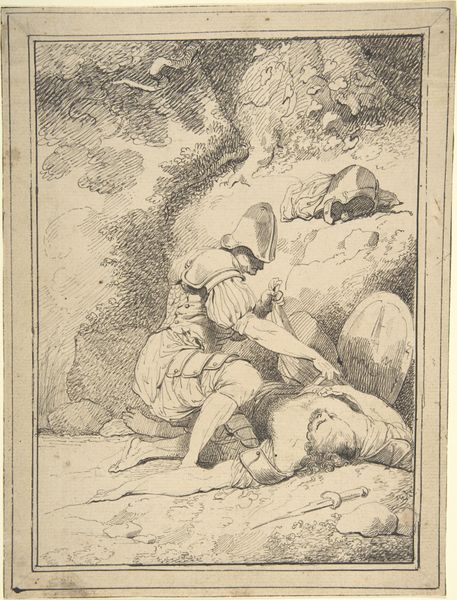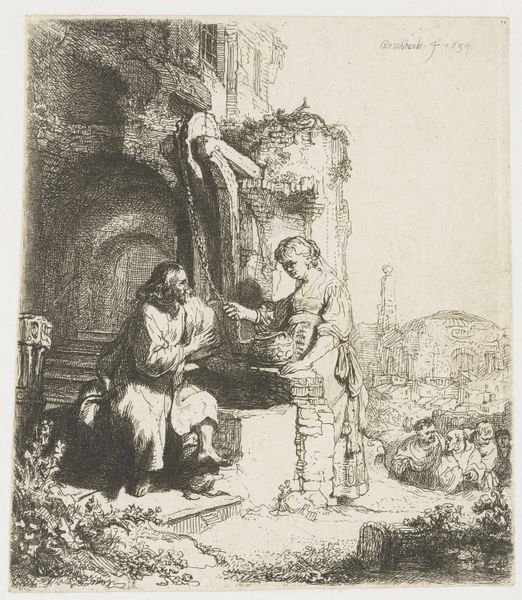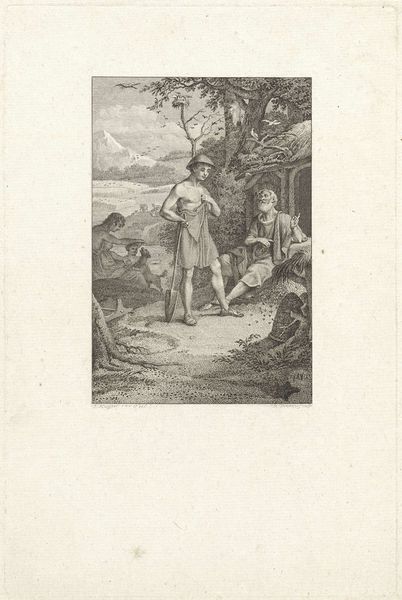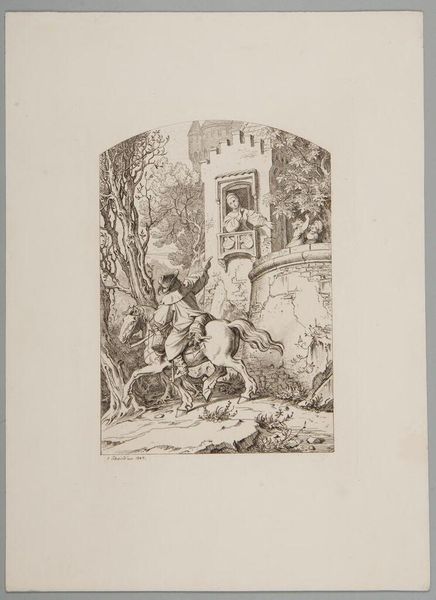
#
pencil drawn
#
light pencil work
#
quirky sketch
#
pen sketch
#
pencil sketch
#
old engraving style
#
personal sketchbook
#
pen-ink sketch
#
sketchbook drawing
#
pencil work
Dimensions: height 211 mm, width 157 mm
Copyright: Rijks Museum: Open Domain
Editor: Here we have Gerrit Groenewegen's "Vier figuren bij een ruïne," which translates to "Four Figures near a Ruin," created sometime between 1764 and 1826. The medium looks like ink on paper, giving it a sketch-like quality. I am struck by the seeming casualness, almost like a snapshot. What stands out to you in terms of the materials used and the techniques evident here? Curator: What captures my attention is how Groenewegen uses such seemingly simple materials – ink and paper – to explore the social fabric of his time. These aren't portraits of aristocrats; instead, we see figures, presumably laborers, depicted alongside the ruins of a structure, maybe once grand, maybe not. Editor: So, you see the materials as commenting on class and labor? Curator: Precisely! Consider the etching technique itself: relatively accessible, reproducible. This aligns with a burgeoning interest in representing everyday life and social realities, moving away from idealized, commissioned portraits of the wealthy. Look at the details – or lack thereof. It's less about individual likeness and more about representing types of people, types of labor. And the ruin. Think about that labor of its construction and what now remains. What does that mean in terms of use value and material decline? Editor: That's fascinating; I hadn't considered the medium as an active part of the social commentary. Curator: Exactly! By choosing this medium and portraying these subjects, Groenewegen isn't just depicting a scene; he's making a statement about the value of labor, the passage of time, and the changing social landscape. How materials shape meaning, wouldn't you agree? Editor: Absolutely. Seeing it that way completely changes my understanding. The ruin, the figures – they’re all connected through the materiality of the artwork itself, making it so much more meaningful. Thank you.
Comments
No comments
Be the first to comment and join the conversation on the ultimate creative platform.

